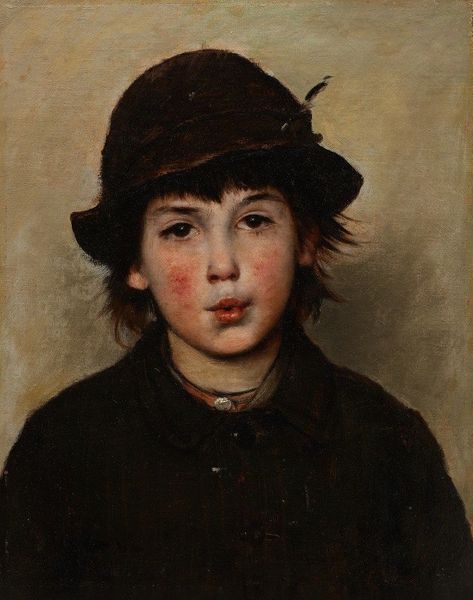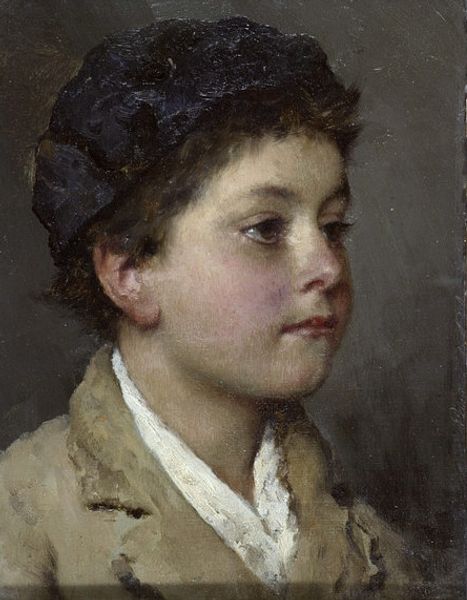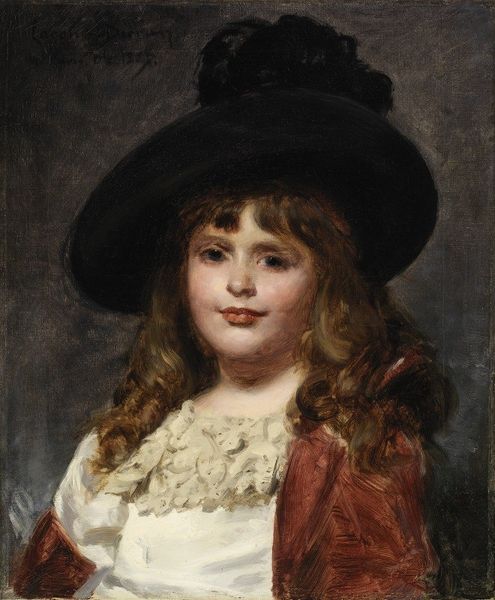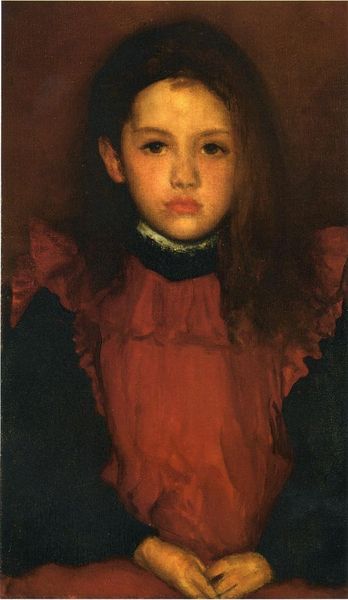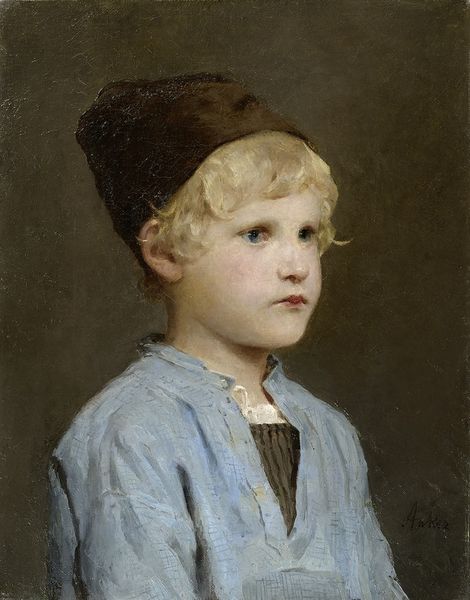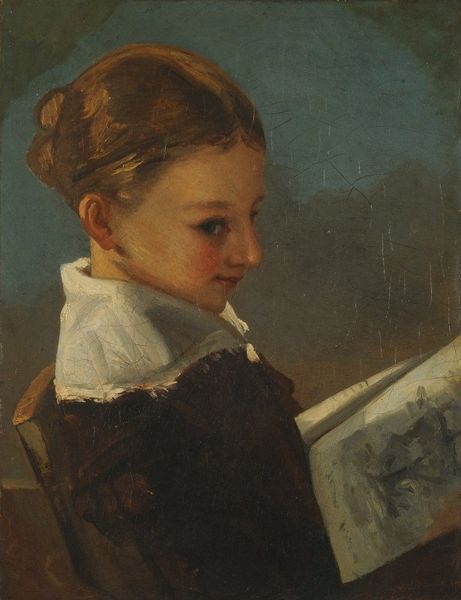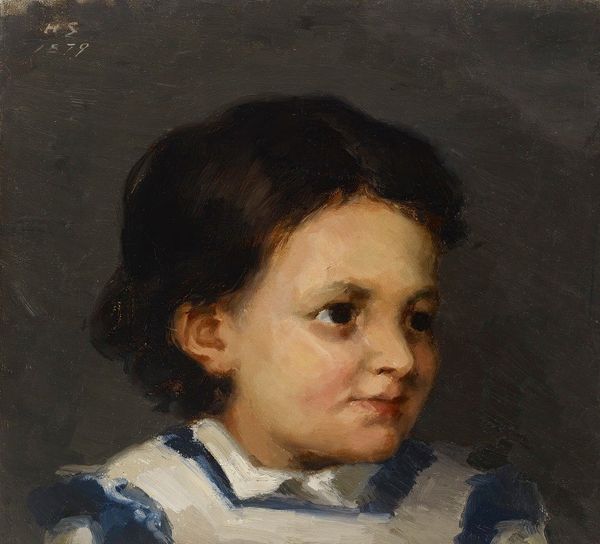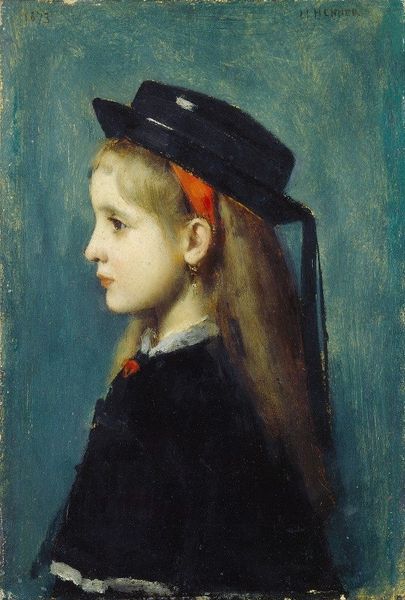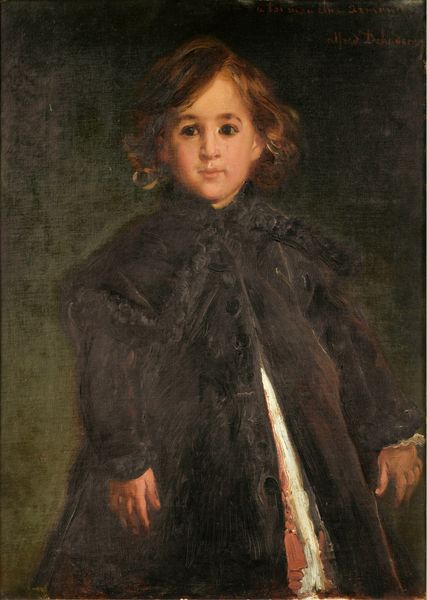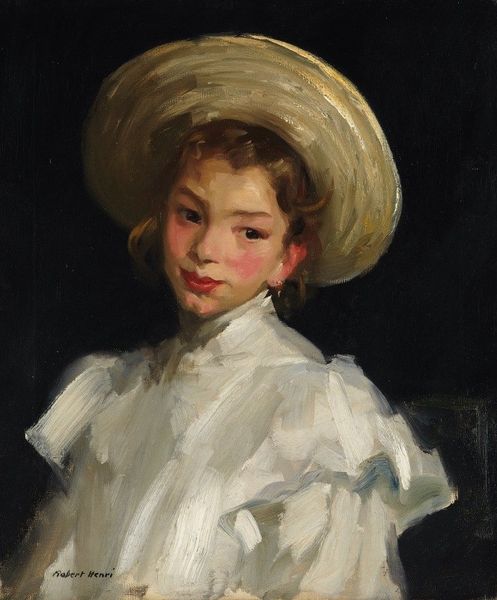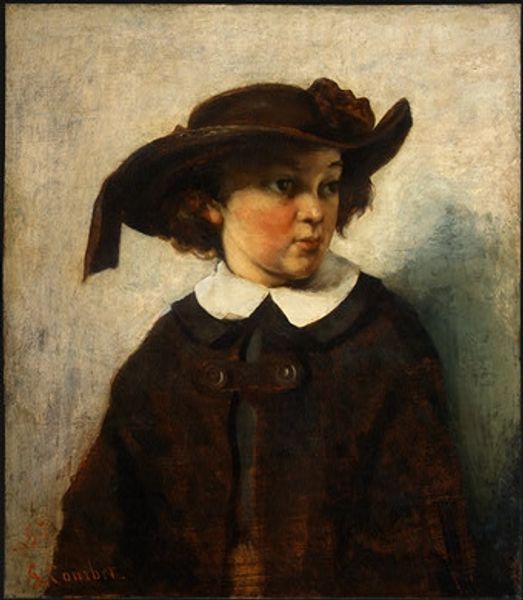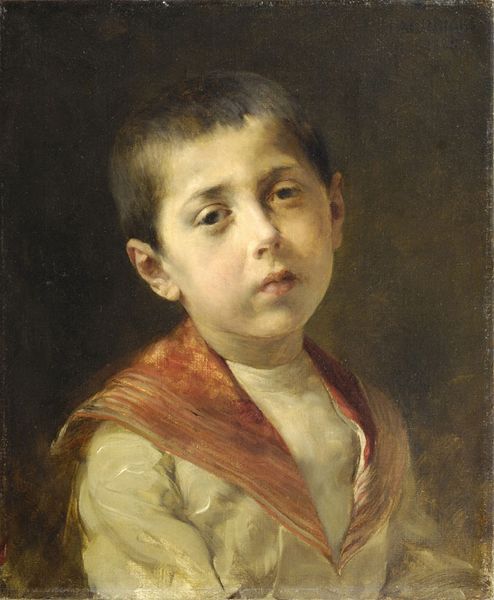
Presumed portrait of Marie Dehodencq, artist's daughter (less than a year before her death) 1872
0:00
0:00
painting, oil-paint
#
portrait
#
painting
#
oil-paint
#
genre-painting
#
academic-art
#
realism
Dimensions: 41 x 33 cm
Copyright: Public domain
Curator: What strikes me immediately is the contrast; her somber clothing clashes with the vibrancy hinted at in her scarf. Editor: That's an astute observation. Here we have Alfred Dehodencq’s "Presumed portrait of Marie Dehodencq, artist's daughter (less than a year before her death)", completed in 1872 using oil paint. There's a chilling historical context embedded; consider the weight of 19th-century mortality rates on children. Curator: True. Given her untimely demise shortly after this portrait, viewing this piece becomes inescapably melancholic. Note how Dehodencq uses light—her face is illuminated, while her clothing remains obscured. The muted tones emphasize her youth while foreshadowing sorrow. Editor: Precisely. Focusing on the form, observe how the dark background and simple composition center us on the figure. The realism feels remarkably unfussy. Her eyes, disproportionately large, dominate her face, drawing us into her gaze. Curator: Her expression appears haunting, almost as if she's peering directly into the viewer's soul. But let’s consider broader implications. Was this a memorial portrait commissioned by the family amidst grieving? And how did the social structures, limited opportunities, and patriarchal roles available to young women impact even the art portraying them? Editor: A sharp shift to sociological angles—though well-considered. But returning to the artist's execution, there’s exceptional skill in depicting the subtle play of light across her skin. It's deceptively simple but meticulously rendered, achieving a life-like quality despite its constraints. The subtle imperfections lend authenticity, sidestepping the artificial idealization typical of Academic art. Curator: I see your point, and agree, it is painted beautifully. However, let’s think about the representation of childhood at the time. Was Dehodencq reflecting reality, or perpetuating ideals through the conventions of portraiture that reflect societal expectations imposed on young girls? Editor: Food for thought, absolutely. In the end, what endures isn't simply technique, but its quiet resonance—a fleeting instance of a girl, forever preserved in paint on canvas. Curator: It is this painting's historical and social weight, the intersection between an individual experience of a young life and her cultural landscape, that renders it so profound, long after she’s gone.
Comments
No comments
Be the first to comment and join the conversation on the ultimate creative platform.
